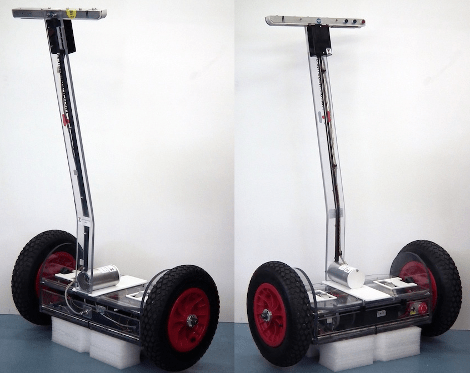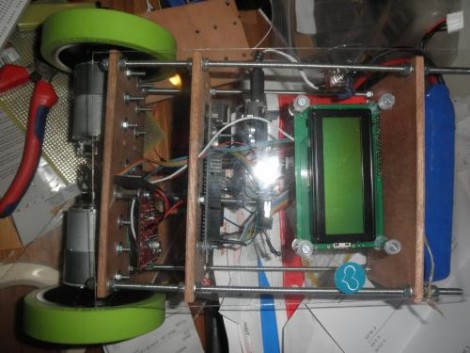[Nick Thatcher] has built several iterations of a homebrew Segway, and the latest version is very impressive. When developing the project he figured there was just no way the thing would ever work, which led to its name, the No-way.
After the break you can catch a video of [Nick’s] test-ride. Looks like the two-wheeler is ready for daily use. You can just make out a red kill-switch on the right side of the polycarbonate body. This lets you disconnect the power if things get out of hand, or just when you’re done riding it. But there is also a dead-man’s switch which we believe uses two sensors where your feet go on the enclosure’s top surface. The handle has some indicator lights built into it, as well as buttons under each thumb which are used for steering. Control circuitry includes an Arduino UNO which reads a gyroscope/accelerometer sensor board from SparkFun. Two 7.2 Ah batteries provide 24V for the pair of electric scooter motors that turn the wheel-barrow wheels.
We love looking at these Segway clone project. So if you’re working on one of your own don’t forget to document your progress!
Continue reading “Self-balancing Transport Is Arduino-controlled”

















